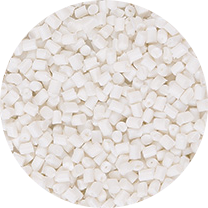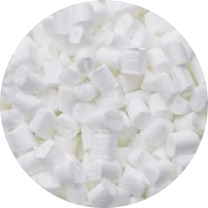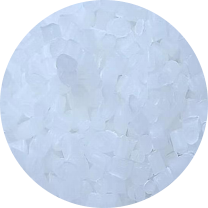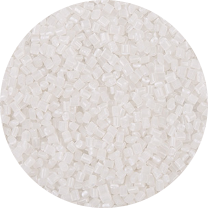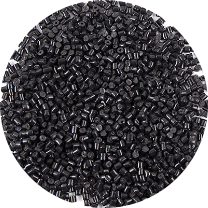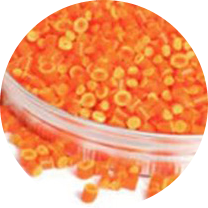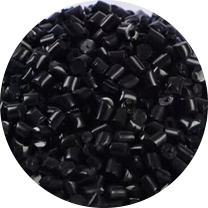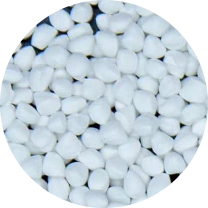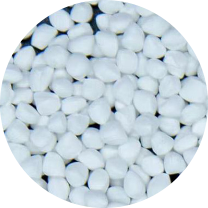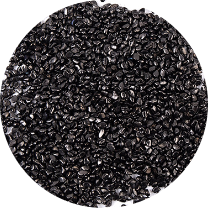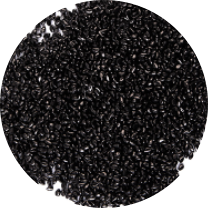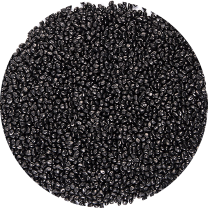What to Do When Fiber Breakage or Spinning Abnormalities Occur While Using Meltblown Masterbatch?
- 1 Common Causes of Fiber Breakage and Spinning Abnormalities
- 2 Specific Manifestations and Solutions for Meltblown Masterbatch Quality Issues
- 3 Process Parameter Optimization and Equipment Maintenance Strategies
- 4 Production Environment Control and Raw Material Pre-Treatment
- 5 Systematic Troubleshooting Process
- 6 FAQ
- 6.1 How to Determine if Fiber Breakage is Caused by Meltblown Masterbatch Quality or Equipment Issues?
- 6.2 What Special Considerations Are Needed When Processing High Melt Flow Index Meltblown Masterbatch?
- 6.3 What Are the Main Differences Between Meltblown Fabric-Specific Masterbatch and Standard PP Masterbatch?
- 6.4 How to Optimize the Masterbatch Addition Ratio When Producing Meltblown Fabric?
- 6.5 Why Does Fabric Uniformity Deteriorate After Using Meltblown Masterbatch?
In the production of meltblown nonwoven fabrics, the quality and processing technology of Meltblown Masterbatch directly impact production stability and the final product's performance. Fiber breakage or spinning abnormalities are among the most common issues in production, leading not only to reduced efficiency but also to material waste and substandard product quality. This article provides an in-depth analysis of the root causes of fiber breakage and spinning abnormalities, along with systematic solutions to help optimize your production process, ensuring continuity and product consistency.
Non-Woven/Polypropylene Fiber/Yarn Multicolor Color Masterbatch
Common Causes of Fiber Breakage and Spinning Abnormalities
To effectively resolve fiber breakage and spinning abnormalities, it is essential to accurately identify the root causes. These issues are typically not due to a single factor but result from the combined effects of equipment, raw materials, and process parameters. A comprehensive understanding of these factors enables targeted solutions.
- Quality Issues with Meltblown Masterbatch: The masterbatch may contain impurities, high moisture content, or poor dispersion, leading to unstable melt flow during extrusion.
- Improper Process Parameter Settings: Key parameters such as screw speed, melt temperature, and die pressure may be set incorrectly.
- Abnormal Equipment Conditions: Clogged or worn spinnerets, or wear in the screw and barrel causing uneven plasticization.
- Insufficient Raw Material Pre-Treatment: If Meltblown Fabric-Specific Masterbatch is not adequately dried, moisture content can vaporize at high temperatures, causing melt fracture.
- Environmental Factors: Significant fluctuations in workshop temperature and humidity can affect the melt's rheological properties.
Specific Manifestations and Solutions for Meltblown Masterbatch Quality Issues
As a critical raw material in production, the stability of Meltblown Masterbatch quality directly affects production continuity. When masterbatch quality falls below standards, specific production issues often arise, necessitating control at the source.
- High Impurity Content: Manifests as frequent fiber breakage, with black or crystal spots visible in the melt.
- Fluctuations in Melt Flow Index (MFI): Leads to unstable melt viscosity, causing intermittent spinning.
- Poor Dispersion: Uneven distribution of pigments or additives in the masterbatch creates localized variations in flow resistance.
How to Choose High-Quality Meltblown Masterbatch
Selecting high-quality Meltblown Masterbatch is the first step in preventing production issues. Professional Meltblown Masterbatch Manufacturers typically adhere to strict quality control systems and offer technical support, ensuring reliable products.
- Evaluate the supplier's quality certification systems and production equipment standards.
- Request complete quality inspection reports, particularly for MFI, ash content, and filtration performance data.
- Prefer suppliers specializing in the R&D and production of Meltblown Nonwoven Masterbatch.
- Obtain samples for small-batch trial production to assess actual processing performance.
Process Parameter Optimization and Equipment Maintenance Strategies
Reasonable process parameters and well-maintained equipment are fundamental to ensuring the proper processing of Meltblown Masterbatch. Systematic parameter optimization and equipment maintenance can significantly reduce the frequency of fiber breakage and spinning abnormalities.
Guidelines for Key Process Parameter Settings
Different types of Meltblown Masterbatch require adjustments to corresponding process parameters. Particularly when using High Melt Flow Index Meltblown Masterbatch, parameter settings must be more precise.
| Process Parameter | Normal Range | Abnormal Manifestations | Adjustment Methods |
| Melt Temperature | 220-250°C | Degradation at high temperatures; poor flow at low temperatures | Adjust in 5°C increments while observing melt state |
| Screw Speed | Based on output requirements | Excessive shear heat at high speeds; insufficient output at low speeds | Maintain balance with die pressure |
| Die Pressure | 2-5 MPa | Potential clogging at high pressure; unstable spinning at low pressure | Regularly clean the die to maintain stable pressure |
| Hot Air Temperature | 240-280°C | Affects fiber fineness and formation | Adjust based on fiber requirements |
Spinneret Maintenance and Cleaning Standards
The spinneret is a critical component in the formation of Meltblown Masterbatch, and its condition directly affects spinning quality. Regular maintenance and proper cleaning are essential measures to prevent spinning abnormalities.
- Establish a regular cleaning schedule, performing thorough cleaning every 72 hours of production.
- Use professional calcination furnaces for high-temperature decomposition to avoid mechanical damage to micro-holes.
- Inspect micro-hole conditions under a microscope after cleaning to ensure no clogging or wear.
- Store spare spinnerets properly to prevent oxidation and contamination.
Production Environment Control and Raw Material Pre-Treatment
Production environment conditions and raw material pre-treatment processes significantly impact the processing performance of Meltblown Masterbatch. Strict control of these factors can effectively reduce fiber breakage abnormalities.
Requirements for Raw Material Drying Processes
Especially for Meltblown Fabric-Specific Masterbatch, proper drying is crucial to ensure processing stability. High moisture content can lead to hydrolytic degradation and bubble formation.
| Raw Material Type | Drying Temperature | Drying Time | Dew Point Requirements |
| Standard Meltblown Masterbatch | 80-85°C | 4-6 hours | Below -40°C |
| High MFI Meltblown Masterbatch | 75-80°C | 3-5 hours | Below -40°C |
| Functional Masterbatch | As per supplier recommendations | As per supplier recommendations | Below -40°C |
Systematic Troubleshooting Process
When fiber breakage or spinning abnormalities occur, following a systematic troubleshooting process can quickly identify the issue and reduce downtime. It is recommended to proceed with the following steps.
- Step 1: Immediately check the melt pressure gauge and temperature display to confirm if process parameters are normal.
- Step 2: Observe the location and pattern of fiber breakage to determine the problematic stage.
- Step 3: Check the raw material drying status and masterbatch appearance to rule out material issues.
- Step 4: Gradually adjust process parameters and observe improvements.
- Step 5: If the issue persists, shut down and inspect the spinneret and filtration system.
FAQ
How to Determine if Fiber Breakage is Caused by Meltblown Masterbatch Quality or Equipment Issues?
Distinguishing between these two causes requires systematic observation and testing. First, test with another batch of Meltblown Masterbatch. If the issue resolves immediately, it is likely a raw material problem. If the issue persists, focus on equipment conditions. Equipment issues often accompany pressure fluctuations or unusual noises, while material problems typically manifest as abnormal melt appearance or increased bubbles. It is advisable to collaborate with technical personnel from professional Meltblown Masterbatch Manufacturers for diagnosis.
What Special Considerations Are Needed When Processing High Melt Flow Index Meltblown Masterbatch?
Due to their unique rheological properties, High Melt Flow Index Meltblown Masterbatch requires special attention to temperature control and shear rates. Temperature settings are typically 10-20°C lower than standard masterbatch to avoid thermal degradation. Screw speeds should be appropriately reduced to minimize shear heat accumulation. Die design must also be adjusted to ensure uniform melt distribution. The technical team at Changzhou Runyi New Material Technology Co., Ltd. recommends thorough process validation when using high MFI products, with gradual adjustments to optimal parameters.
What Are the Main Differences Between Meltblown Fabric-Specific Masterbatch and Standard PP Masterbatch?
Meltblown Fabric-Specific Masterbatch is a specialized masterbatch designed for meltblown processes, differing significantly from standard PP masterbatch in several aspects. Firstly, it typically has a higher Melt Flow Index (ranging from 1000-1500 g/10min) to ensure the formation of ultra-fine fibers under high-speed airflow. Secondly, it has a narrower molecular weight distribution, ensuring melt flow stability. Additionally, Meltblown Nonwoven Masterbatch often contains specific additives, such as antistatic or electret agents, to meet functional requirements of the final product. Standard PP masterbatch cannot meet these technical requirements.
How to Optimize the Masterbatch Addition Ratio When Producing Meltblown Fabric?
Optimizing the Meltblown Masterbatch addition ratio requires balancing product performance and processing stability. It is generally recommended to start with a 2-4% addition rate and adjust based on indicators such as fiber fineness, uniformity, and filtration efficiency. Excessive addition may cause significant changes in melt viscosity, increasing the risk of fiber breakage, while insufficient addition may not achieve the desired modification effects. Leveraging extensive production experience, Changzhou Runyi New Material Technology Co., Ltd. provides tailored addition ratio recommendations to ensure optimal production efficiency and product quality.
Why Does Fabric Uniformity Deteriorate After Using Meltblown Masterbatch?
Deterioration in fabric uniformity is often directly related to the dispersion quality of the Meltblown Masterbatch. If pigments or functional additives in the masterbatch are unevenly dispersed, localized variations in melt viscosity can occur, affecting fiber formation uniformity. Additionally, mismatched process parameters, such as uneven temperature distribution or unstable airflow, are common causes. It is recommended to first check the dispersion quality of the masterbatch, then systematically optimize process parameters to ensure consistent melt flow and fiber formation.
prevNo previous article
nextHow to Solve Surface Gloss Unevenness in Injection White Masterbatch Products


 English
English 中文简体
中文简体 한국어
한국어 عربى
عربى
